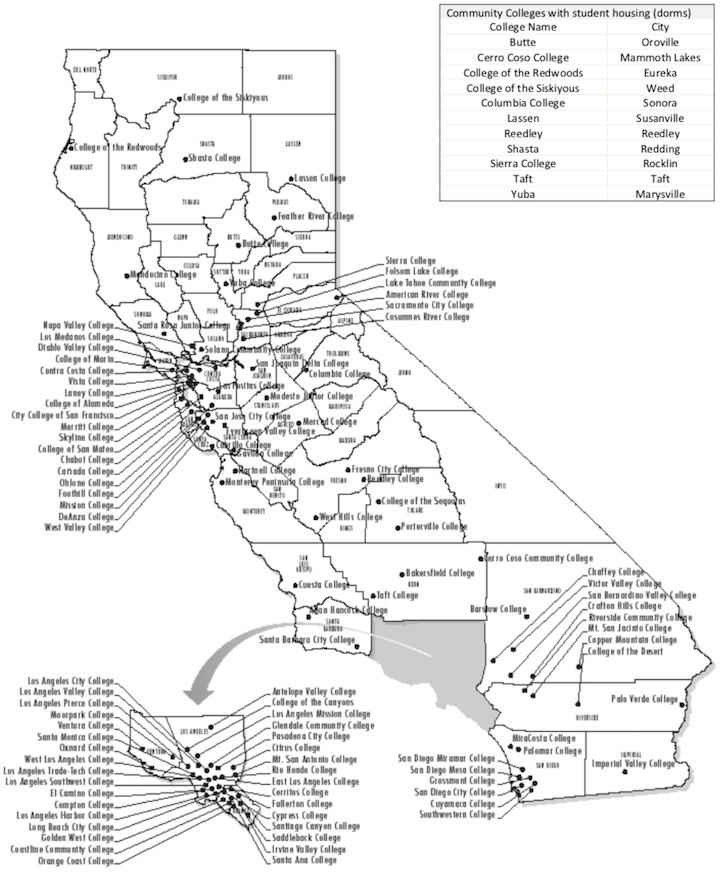California Community Colleges
- First year of tuition is free for first-time, full-time students.
- Enroll in a minimum of 12 units for the fall 2020 term.
- Complete a quick FT3 Pledge: deadline is November 1, 2020.
- Submit the 2020-2021 Federal Application for Federal Student Aid (FAFSA) or Dream Act Application.
- Complete a minimum of 12 units for the term with a GPA of 2.0 or higher.
- Be a California resident or otherwise exempt from paying non-resident tuition fees (e.g. AB540).
- Receive a refund of your tuition fees!
- Must have a high school diploma or be 18 years of age to be considered a college student.
- Tuition at community college is less expensive than four-year colleges.
- Course schedules are flexible, with day and evening classes offered.
- Credits earned can be transferred to a four-year college (view assist.org).
- Offers three types of programs:
- Transfer Program to a 4-year school
- Associate’s Degree
- Trade/Technical Program to obtain a certificate of training.
- Honors Programs are offered at many community colleges. Requirements vary, however, a GPA of at least 3.0-3.5 is usually the standard. For more information contact your school of choice.
- Offers Transfer Agreement Guarantee (TAG) program with 6 of 9 University of California campuses. See admission.universityofcalifornia.edu/transfer/guarantee.
A few of the 113 California Community Colleges: Diablo Valley College
Las Positas College
Chabot College
Los Medanos College
Contra Costa College
Ohlone College
Laney College
De Anza College
San Mateo City College
Frequently Asked Questions (FAQ)
- What do community colleges offer? Community colleges provide career programs in hundreds of areas, such as technical and industrial trades, health occupations, business and finance, electronics and computer sciences, agriculture, police and fire, food science, and building and landscaping. Depending on the occupation, training may take from six months to two years. Associate degrees and certificate programs are available for many fields. Students who want to earn a four-year degree may choose to first go to a community college for a number of reasons, such as:
- Close to home
- Lower cost
- More time to explore their options and interests
- Smaller classes and more direct contact with faculty
- Higher acceptance rates for transfers than freshman at most universities
- Potential for guaranteed admissions
- Who attends community college? Community college is designed for students who are seeking a technical/career certificate, a two- year associate’s degree, or credits to transfer to a four-year university to obtain a bachelor’s degree. Students may also take courses to enhance their job skills, improve their knowledge of basic English or math, and for personal enrichment or enjoyment. Community colleges attract students with a broad range of backgrounds, abilities, and interests. Most community college students work as well as go to school. Many students are the first in their family to attend college or are raising a family while attending school. Only about a quarter of all students attend college full time. Community college students reflect a wide range of ages, with about half younger than 25 and a fifth
- Are all community colleges the same? Each of the 113 community colleges in California are distinct and reflects the area where it is located. All try to meet the needs of all students. However, some colleges—particularly those in regions with multiple colleges—specialize in specific areas. If there are two or more colleges near your home, learn how they differ in terms of the career programs they offer and their transfer agreements with California State University (CSU) or University of California (UC) campuses. Often the college’s course catalog can be downloaded from the Internet. In addition, you should make an appointment with your high school and/or community college counselor to find out what your local colleges offer. It’s also a good idea
- How do I apply? Contact the admissions office of the college you would like to attend. To get a copy of the application visit cccapply.org. There you can apply to many colleges through a common online application and link directly to college websites for those colleges that require their own application. Also make an appointment with the college’s counseling office. Many courses, particularly entry-level required classes, fill up quickly. To make sure you get the courses you want, ask your high school counselor about the best time to apply—typically spring or early summer. Some students begin college in the summer to get a head start. Some colleges offer a short orientation class that includes help in signing up for classes. If students take that class in the summer, they have an advantage over the freshmen who will enter college in the fall.
- What if I am uncertain about what career I want to pursue? Community colleges offer many opportunities to explore careers. If you are unsure whether you want to go to a four- year university, for example, you can keep your options open by carefully planning your schedule. Many courses that fulfill requirements for an associate’s degree also meet the prerequisites if you want to transfer to UC or CSU campuses. Typically, there are fewer community college courses accepted by UC than CSU, and fewer accepted by CSU than for an associate’s degree. For example, if you need to take a math course, choose one that meets the criteria for all three: UC, CSU, and an associate’s degree. All students entering community college should meet with one of the college’s counselors to plan their schedules. It is even more important to do so if you are not sure which university you want to attend and/or what major you want to pursue.
- Is financial help available? Some students can receive fee waivers and assistance with books and living costs, such as housing. Visit the financial aid office at your community college and ask about the BOG waiver, grants, low-interest loans, work-study (on or off-campus) and scholarships. To apply for financial help

